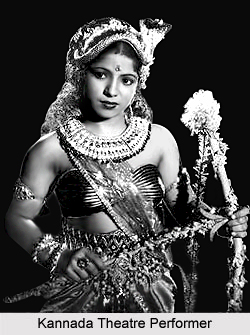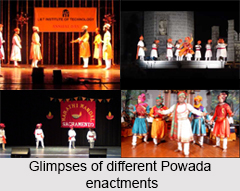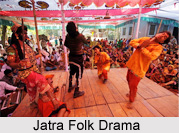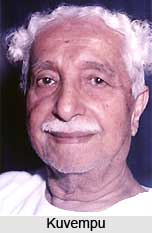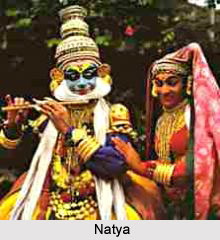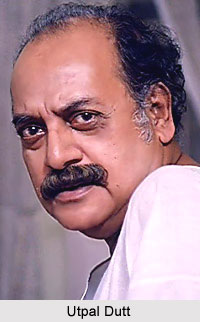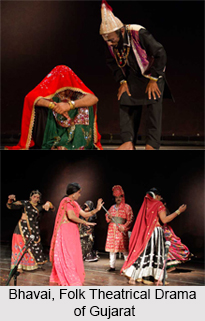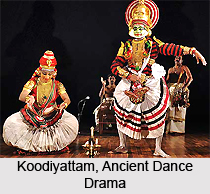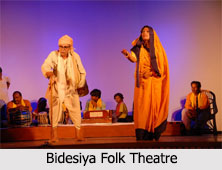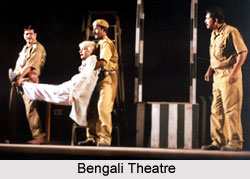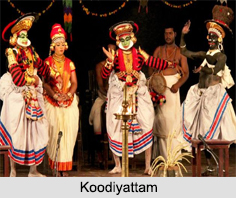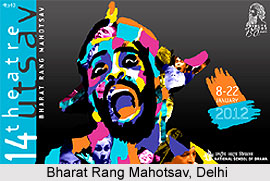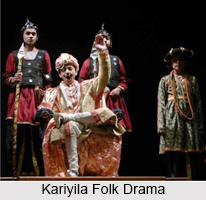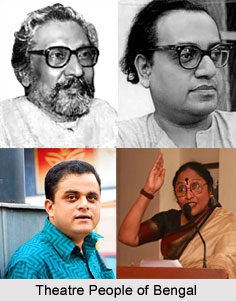Prakritis or types of characters are an essential part of the Natyashastra. In a play there are male and female characters. They come under three types namely the superior or Uttama, the middling or Madhyama and the inferior or Adhama. The superior Male character is a man with full control over the sense organs. He is wise and skilled in various arts and crafts. He never utters lie and is willing to help and console the poor people. He is conversant with all Sastras, grave, liberal, patient and generous. Such are the salient features of the Uttama. The Madhyama is an expert in understanding the manners of people proficient in arts and also in the Sastras to make a living thereby. He possesses wisdom and sweetness of manners. The inferior Male character uses harsh words. They are ill mannered and base in their mental spirit. They do not hesitate to commit crimes. They are irascible and violent. They are covetous of women fond of quarrel.
Superior female character is a woman of tender nature. She is never wicked and pays head to superior persons` advices. She is never cruel or bashful by nature and good in her manners. She possesses natural beauty nobility and similar qualities. The middling female character does not have these fine qualities to a great extent. The inferior female character is more or less like the inferior male character. Maid servants etc. come under the category of Samkirna Prakriti. The eunuch is also such a one but still inferior. In Dramas the Sakara and Vita are also characters of mixed nature.
The superior and the Middling male characters are of four types. Dhiroddhata is the vehement one with self control, Dhirodatta is the frivolous or light hearted possessing self control, Dhira lalita are the exalted and esteemed one with self-control and Dhiraprasanta are the quiescent one with self control. The gods are Dhiroddhata. The royal dignitaries are Dhira Lalita. The minister and the commanders in chief are Dhirodatta. The Brahmins and merchants should be known as Dhira Prasanta. The Vidusaka are of four types. They are the jesters in order of the gods, kings, Ministers and Brahmins viz. the Sannyasin, the Brahmins, other Dvijas and disciples. They are the confidents of the respective heroes during their separation from their beloved ones and exhibit mastery of good dialogue.
If there are many male characters in a play and one of them undergoes great difficulties but, by dint of energetic enterprise ultimately attains an exalted position that character is called the Nayaka. Sometimes there may be two or more characters answering such description and the person who is the better one of the two is the real Nayaka. There are four types of Heroines. These are the goddesses, Queen, a woman of exalted family and the fourth one is the courtesan. The women of noble families are Udatta and Nibhrta. The courtesan and the crafts woman may be Lalita and Udatta.
There are two Classes of Prakritis. The Characters in a play have two types of employment at the Bahya (External) and the Abhyantara. The character that has the Upacara (Service) and dealings with the king is the Abhyantara and those dealings with outsiders are called Bahyas. The female characters of the Abhyantara nature are the Mahadevi (Empress), other queens, noble born (Svamini), the Sthayini (permanent wife), Bhogini (Mistress), Silpakarini (Crafts woman), Natakiya (Actress), Nartaki ( danseuse), Anucarika (Attendant woman), Paricarika (Chaperon), Saficarika (Maid that moves about), Presanacarika (Maid for running errands), Mahattara (Mationly attendant), Pratihari (Portress}, Kumari (Virgin), Sthavira (Old dance) and Ayuktika (female supervisers).
The characteristics of other inmates with special assignments are never rash, restive, greedy, ruthless and angry. They are quiet, satisfied and forgiving by nature. Self control and absence of passion are their salient features. No ailment affects them. They are devoted to the king. They belong to the various regions of the realm. Womanly infatuations are absent in them. The eunuchs, earlier mentioned as the third Prakriti should be employed in the harem. The Snatakas, Kaftcukiya, Varsadhara, Aupasthayjka, Nirmunda etc. are placed in the different parts of the harem. Women who attend to all the affairs of the king should be proficient in performing all types of dance in the theatre under the authority and jurisdiction of the harem.
The king should be intelligent with perfect control over the sense organs. He must be truthful, clever and powerful with good memory, purity and high mindedness he must be of good character. The Commander in Chief should possess a good character, truthfulness and thorough knowledge of Arthashastra. He should be active and sweet tongued. He should be devoted to the king and honoured by every one. The Purohita and Mantri are high-born intelligent and masters of the Vedic lore and polity too. They must be the inhabitants of the realm of the king. They should be loyal pure and righteous. The Saciva should be intelligent and equipped with mastery of polity. He should be sweet in words and powerful in carrying out the requisite activities. He must have studied the Arthashastra. The Judicial officers must know the details of the work of litigation.
The tutors and Wardens of the Princes must be alert and watchful. They should not be indolent or partial. Well versed in polity and the different Sastras they should not be negatively influenced by passion. The members of the court should be persons of efficiency and practical experience. They are also called Sabhastaras and their appointment, should be carefully done by the king after observing as testing their qualities.
Thus types of characters play a vital role in the Natyashastra.







